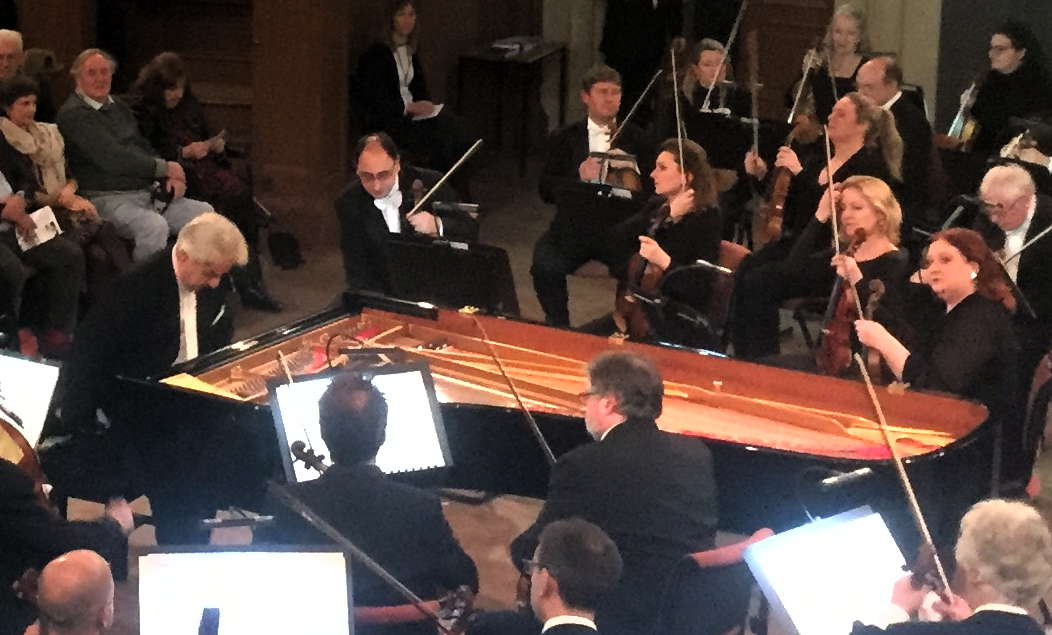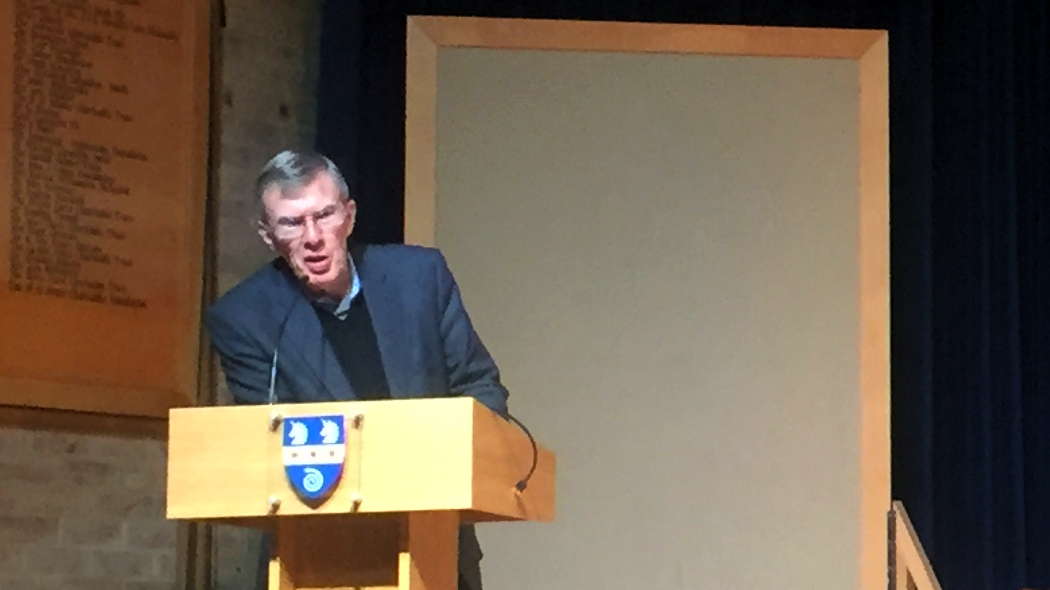Fresh and Energetic Performances
MALCOLM MILLER listens to
Beethoven from Marios Papadopoulos
and the Oxford Philharmonic Orchestra
To mark the Beethoven 250 Anniversary, the Oxford Beethoven Festival launched an exciting year-long celebration in January 2020 with a star-studded roster of international artists performing a wide range of Beethoven's oeuvre. Due to the COVID-19 crisis, as with so many festivals worldwide, much of the schedule was, sadly, though necessarily, cancelled. Yet, if it is still possible that cancelled highlights might take place at some point, perhaps next year, it is also just possible that the Ninth Symphony may still feature at its original date, three days before Beethoven's birthday in December, given by the resident Oxford Philharmonic Orchestra under the dynamic baton of their founder Marios Papadopoulos, the Festival's Artistic Director. Papadopoulos, whose energy and enthusiasm inspired the festival from the start and who has developed the event into a formidable international event, is also the conductor-soloist of the entire cycle of piano concertos, the second concert of which I was fortunate to attend, on 25 January 2020 in the resonant acoustics of the historic, capacity-filled Sheldonian Theatre. Whereas the opening concert featured the 'Eroica' symphony and Piano Concerto No 1, here we were regaled with three masterpieces, the first and fifth symphonies and the Piano Concerto No 4.
Throughout the superb evening, the OPO gave fresh and energetic performances. Indeed Papadopoulos and the Oxford Phil are not strangers to these works, of which this was their third such cycle, interpreted with elegance and always effective drama. The Oxford Phil is fortunate to have a very rich and creamy wind section, rich brass and a substantial string section, and Papadopoulos' immersive interpretations were absorbing.
The opening Symphony No 1 attested to stylistic sensitivity, with brightness and delicacy of phrasing, loving shaping of harmonic and motivic details, and picturesque dovetailed instrumental exchanges such as the cameos for oboes and flute, the counterpoints in the slow movement's reprise, and the dialogue of string turn and bassoon's comments in the finale's Rondo theme. Indeed the first bassoonist excelled in a rather prominent role. Tempi were well judged and never over-lingering as in the intensifications of the Scherzo and slower Trio with its more expansive woodwind.
The fourth piano concerto was a highlight, Papadopoulos eliciting a glistening piano tone and rhythmic propulsion, infused with a unique Beethovenian soundworld evoked through the fine response to textural spaces. The positioning of the piano facing into the orchestra was both historically correct and enhanced the magic of the famous opening, where the sound seems to levitate from within the totality rather than emerge from a separated individual. The Allegro evolved a magisterial impetus; in turn light and bold; the cadenza spun its spell, wove a glistening thread. Papadopoulos produced a compassionate legato in the second subject, whilst marking the recapitulation with its full impact, delving deep into the piano's chordal sonorities. Amongst many poetic highpoints, notable were the hushed chromatic passages between strident tuttis.

Marios Papadopoulos with members of the Oxford Philharmonic Orchestra playing Beethoven's Piano Concerto No 4 in the Sheldonian Theatre, Oxford, UK.
Photo © 2020 Malcolm Miller
With the pianist as conductor, the dialogue of the second movement was quasi-schizophrenic, the emphatic strings changing vocality to eventually match the subdued, caressing tones of the piano. Here Papadopoulos' tone was ringing, resonant with a touch of whispering mystery, always pursuing the phrase to its very end. The finale exuded joy, fun, sprightly, yet pearl-like scales sweeping across the keyboard, and a poignant duo with cello in the main rondo theme. In the final cadenza, Papadopoulos unusually adopted a delightful doubling added by Rubinstein.
The climax of the concert was the ubiquitous fifth symphony, imbued with immediacy and impact; the instrumental Interactions were always engaging with highpoints such as the noble second subject horns in the fifth symphony, the gritty strings counterpoints in the Scherzo. In the first movement the OPO unleashed its full complement of intensity and drama; the variations drew leaner and cleaner lines, with lovely woodwind playing and contrasts of colour. The third was suitably mysterious, whilst the finale's extraversion was visceral, one could almost touch the fanfares from the wooden loggias in the high-ceilinged hall adorned with frescos. With the full impact of the trombones, laced at the top with flute and piccolo, the finale provided a triumphal and exuberant climax.

Applause for Marios Papadopoulos and the Oxford Philharmonic Orchestra in Oxford's Sheldonian Theatre on 25 January 2020. Photo © 2020 Malcolm Miller
The concert as a whole was notable for its stunning sound and elicited a standing ovation from the enthusiastic audience, amongst whom were delegates from an international academic Beethoven Symposium held in nearby St Hilda's College as an adjunct event in the Festival. Here, world authorities on Beethoven spent two days discussing new aspects of Beethoven research, shedding fresh light on political and personal meanings, explaining novel angles of analysis and interpretation. Professor Glenn Stanley, the American scholar, shed light on the political aspects of Fidelio from the perspective of Beethoven's time with insights into recent productions.
In her paper 'Counting Works, Counting Variations', Professor Elaine Sisman (Columbia University) discussed a fascinating conundrum about the numbering systems in and within Beethoven's music. In his focus on 'Performing Beethoven's Piano Music in the 21st Century', Professor Barry Cooper (Manchester University) shared new insights on Beethoven interpretation highlighting aspects relating to intention and authenticity, whilst Professor Nicholas Marston, of Cambridge University, gave a detailed Schenkerian reading of part of the 'Eroica' to explain a fascinating orchestrational detail for flute and violin.
Professor David Levy, Wake Forest University, USA, and author of a seminal study of the Ninth symphony (Yale U Press), related a richly allusive reception history of the work as a glimpse into the latest revised edition of his book. Professor Birgit Lodes, University of Vienna, currently engaged in writing a book on 'Beethoven and Death', gave an exciting novel reading of the piano sonata Op 81a 'Das Lebewohl', suggesting a hidden personal narrative meaning distinct from the public dedication to Archduke Rudolf, and inspired by feelings of affection and loss for a young female pupil. William Kinderman's lecture-recital on 'Dystopian and Utopian Symbols in Beethoven' illuminated the wider aesthetic and ideological meanings of both the 'Appassionata' and the sonata in C minor Op 111 with riveting live illustrations.

William Kinderman's lecture recital at St Hilda's College, Oxford.
Photo © 2020 Malcolm Miller
With its rich array of new research, the whole conference was an imaginative complementary event to the live concerts in the Oxford Beethoven Festival, which one hopes may, when possible, recover its momentum and continue to offer an attractive regional alternative to a sometimes London-centric focus in British concert life.
Copyright © 9 May 2020
Malcolm Miller,
London UK

FURTHER INFORMATION: LUDWIG VAN BEETHOVEN
MORE FEATURES ABOUT CLASSICAL MUSIC IN OXFORD




